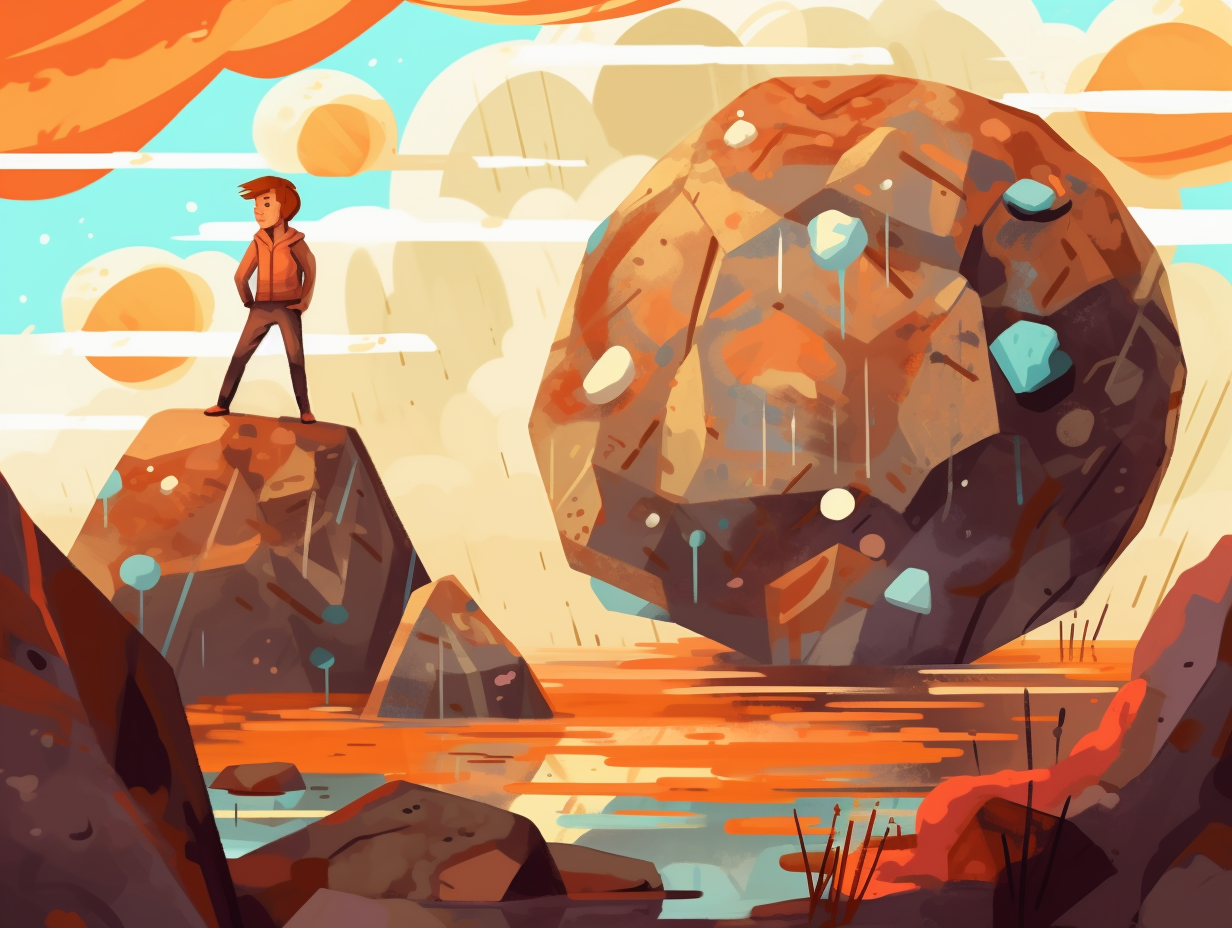Discover the Wonders of Earth: Top 7 Fun Facts About Deposition

1. Frost's Nightlife Adventures
Who knew frost had a nightlife? It turns out Jack Frost has been sneaking out while the air gets frisky and the moon gently warms above-freezing temperatures, creating artistic ice sculptures on objects, just for the fun of it: Known as hoar frost or radiation frost, these white ice crystals form on surfaces despite above freezing temperatures, thanks to moist air, weak winds, and cold conditions, leading to stunning patterns and even the occasional avalanche when they party too hard in the snow!
Source => chemeurope.com
2. Mother Nature's Shopping Sprees
When Mother Nature goes on her wild shopping sprees, her favorite sale is the erosion clear-out and deposition bonanza: Beaches and glacial moraines are formed through the gradual deposition of sediments and rocks, which have been transported by flowing ice or water, wind, or gravity, often taking thousands of years to create stunning landforms. Beach coastlines, for example, constantly change along with the crashing tides, shifting their territory through the ocean's never-ending game of give-and-take.
Source => sciencing.com

Did you know the water cycle has an exclusive guest list for its "icy" dance parties? Discover who's on the list and their frosty dance moves in our fun facts! 🌧❄️☃️
=> Fun Facts about The-Water-Cycle
3. Glacier: The Clumsy Artist
Think of a glacier as a clumsy artist that can't help but leave a unique trail of paint splatters as it slides across an icy canvas: a terminal moraine is essentially a map of the glacier's movements, with different rocks and minerals representing the colorful strokes left behind, revealing the geological history and the glacier's path in a natural masterpiece.
Source => nationalgeographic.org
4. Electrophoretic Deposition: The Dance Maestro
Once upon a charge: in a world where ceramics, metals, and polymers walk the tightrope between chaos and order, electrophoretic deposition (EPD) emerges as a knight in shining, cost-effective armor! This wet electrolytic deposition maestro sweeps charged particles off their feet and onto the dance floor of an oppositely charged electrode, creating a compact and harmonious thin film tango. From hydroxyapatite and TiO2 films to gold nanoparticle choreographies, EPD's got your biomedical and composite coating dance cards covered!
Source => sciencedirect.com

5. The Dangers of Phalangeal Autographs
Next time you're in a cave, resist the urge to leave a "phalangeal autograph" on those fancy rock formations: the oils from our human hands can actually halt their growth, with some stalactites and stalagmites in Mammoth Cave taking centuries to recover from such interference. The fragile calcite and gypsum masterpieces took thousands of years to form, so hands off, lest we are forever denied the full glory of these subterranean wonders!
Source => nps.gov
6. Fashion-Forward Faucets and Spectacle Superstars
Who knew faucets and eyeglasses could be fashion-forward and technologically savvy? Sporting a golden touch to tools, while dishing out a "smudge-free" experience for your eyes, this behind-the-scenes superstar truly knows how to make a spectacle: Thin-film deposition technologies, such as PVD and CVD, have enhanced everyday items since the 1930s with improved properties, like durability and conductivity. For example, PVD coatings on drill bits not only provide a stylish gold hue but also reinforce their durability, while antireflective films can be applied on eyeglasses for increased scratch-resistance. The next time you open a door or hit the road, you might be flaunting a piece of deposition tech too!
Source => vaportech.com
7. Volcanic Ash: The Ultimate Party Pooper
When life gives you volcanic ash, don't make lava-linis! Mother Nature's gritty, abrasive "snow" can be a real party pooper: Volcanic ash particles, with their jagged edges, are not only mildly corrosive but can also damage human infrastructure, wreak havoc on aquatic life, and pose serious hazards to airplanes.
Source => nps.gov
Related Fun Facts




















